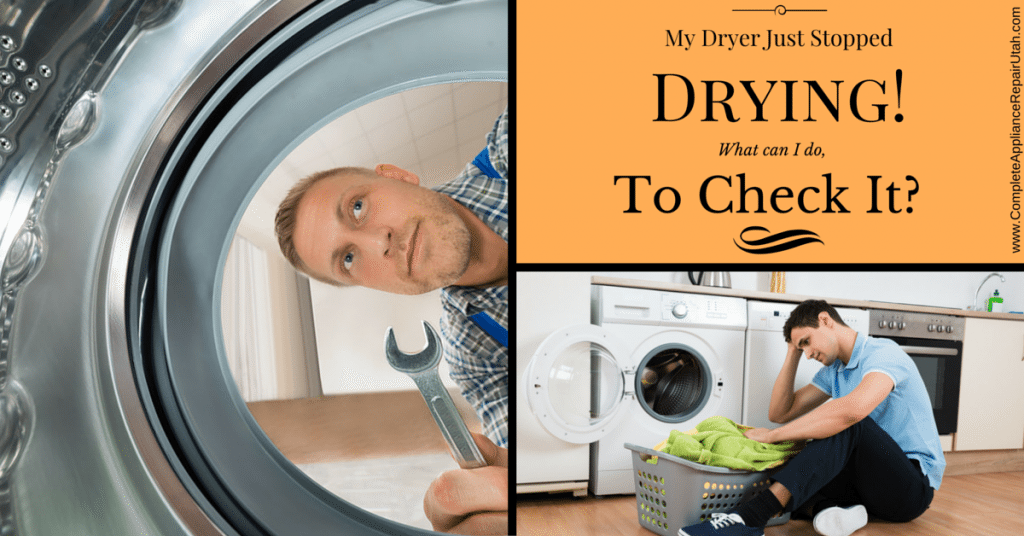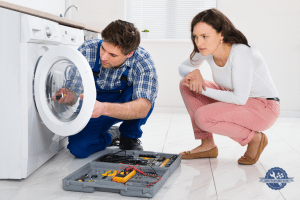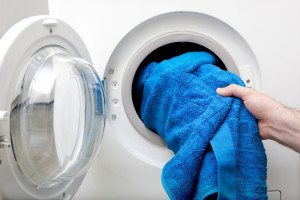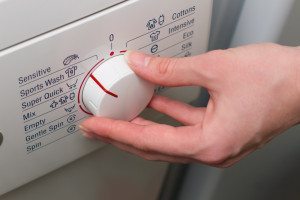Dryer Not Drying Clothes?
If you’ve ever experienced a problem with your dryer not drying your clothes, you know how frustrating it can be. Yes, technically you could hang your clothes up outside or on your shower rod, but we know you are busy. Most days you simply don’t have time to do that! You want your dryer fixed as quickly as possible. When your appliance that is made to dry things isn’t, there are a few things you can check to determine the problem.
Air Flow
Your dryer will not dry clothes if it doesn’t have proper air flow. If a vent is clogged or partially clogged, it will increase your dry time or halt it all together.
First, check the outside vent flap or hood. Sometimes birds or small animals can make nests in the vent. Debris can also accumulate. Make sure the flap can open freely and you feel a strong slow of air coming out when the dryer is running. If you can’t feel air or there is a blockage, clean it out.
You also need to clean the lint filter. Don’t forget to clean out the lint filter each time before starting your dryer. You can also do a more heavy-duty cleaning by vacuuming out the area under the lint filter with a nozzle attachment. In your yearly maintenance of your dryer, be sure to clean the venting system thoroughly. It will help you avoid drying problems in the future.
Check the power
If your dryer isn’t drying at all and isn’t even turning on, you may have a problem with the power. A power issue may have to do with the outlet power supply, a blown fuse or even a circuit breaker. You can rule these out by checking the terminal block. If it’s not burned out there may be a problem with the door switch, thermostat, start switch or thermal fuse.
You may also have an issue with the buttons not fully depressing to make your drying selection. Hopefully this is your problem, because it’s simple to fix. The same goes with a dryer door that may seem closed, but really is slightly open preventing your dryer from starting.
Maintained Ducts
You should also check out the dryer’s duct, the metal hose found behind your dryer. Look for any visible damage like kinks or sagging. You should also check the inside for any blockages. Once it is removed, you can shake it out or run a bunched up cloth through it to remove any buildup. If this part is damaged, it needs to be replaced.
These are a few simple trouble shooting steps you can take to decide why your dryer is not drying your clothes. With many other possibilities as to why your dryer is on the fritz, call a professional to help you find the problem. If you’re looking for same day service with a one year parts and labor warranty, give the guys at Complete Appliance Repair. They are experienced with years of electrical and technical repairs, and can work with both older and newer makes and models. Ditch the clothesline and give them a call today!



 be in need of a washer repair. Vibrating and shaking mean there are a few different parts that could need attention; you could have a problem with a suspension spring, tub spring, snubber ring or damper pad to name a few!
be in need of a washer repair. Vibrating and shaking mean there are a few different parts that could need attention; you could have a problem with a suspension spring, tub spring, snubber ring or damper pad to name a few!
 the water drained out?
the water drained out? washer problems for sure, but in the meantime, here are a few possible causes.
washer problems for sure, but in the meantime, here are a few possible causes.